We may receive a commission when you use our affiliate links. However, this does not impact our recommendations.
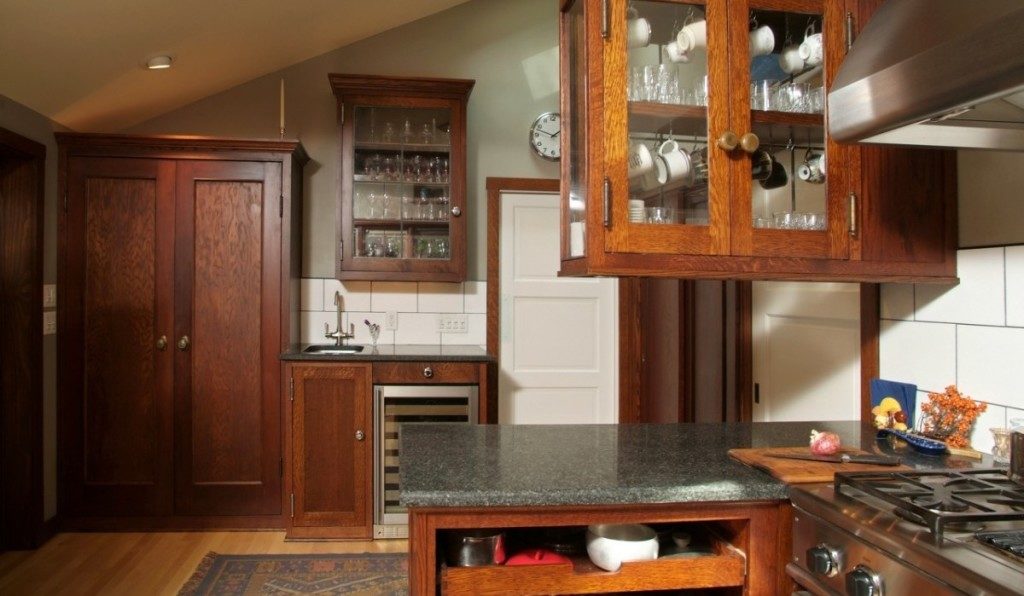
A kitchen of white oak and salvaged glass, 2005. Cabinetry by NR Hiller Design, Inc. Remodeling general contractor: Gilbert Construction, Inc.
The simple butt hinge is ubiquitous. Even if the doors of your kitchen cabinets hang on concealed European hardware and you swear by Brusso knife hinges for every piece of furniture you make, there’s a good chance that the architectural doors throughout your house, as well as most of the buildings you visit each day, are hung on butts.
Architectural, or full-size, butt hinges are the beefier counterparts of their furniture and cabinet-sized cousins. Unlike those smaller versions, architectural butts really do need to be mortised into both the door stile and jamb (or cabinet)–not just to provide adequate support for a door, but also because their leaves are so thick that mortising into the door stile alone would look clunky.
Most of today’s architectural butt hinges are stripped down to the basics: a pair of leaves held together by a pin.
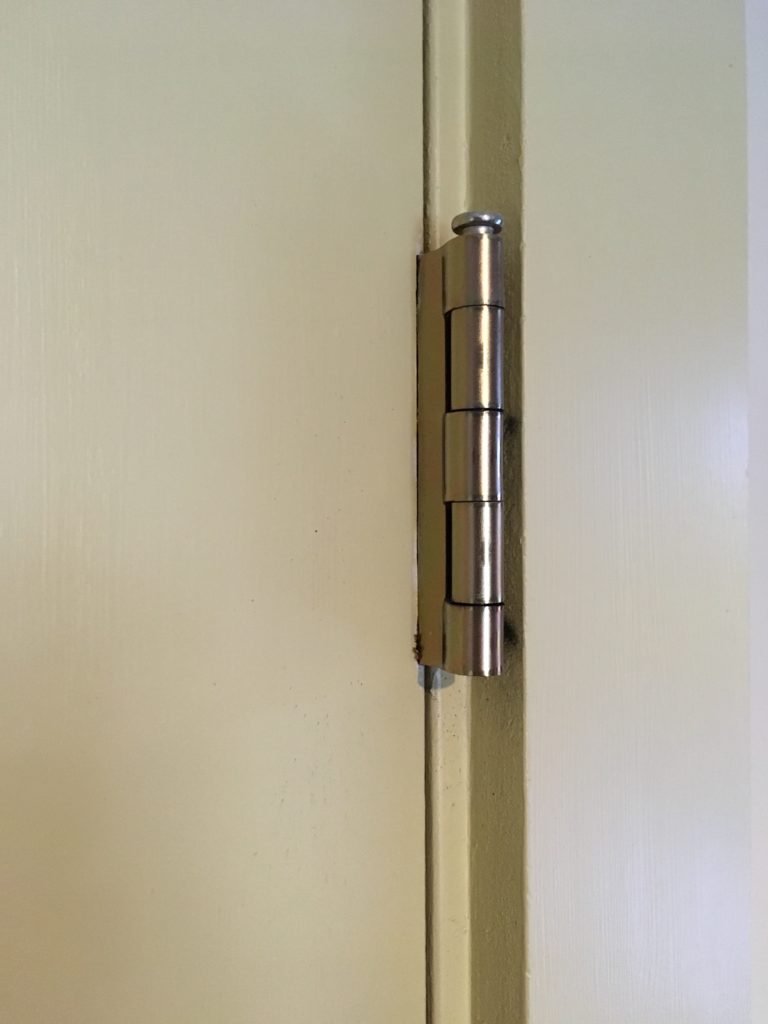
A basic contemporary architectural butt hinge: stripped down to two leaves that can be routed into a door and jamb using a template, then put together by tapping in a central pin.
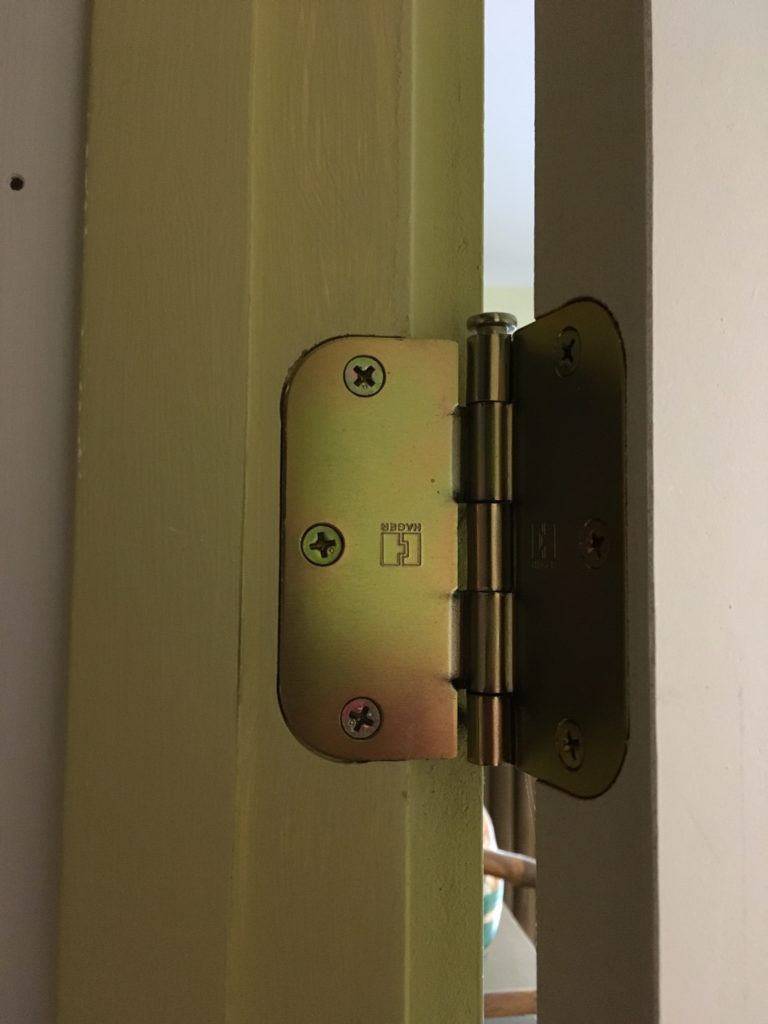
The inside story: Round corners make for easy routing
But it wasn’t always so. Butts from the 19th and early 20th centuries often had decorative finials: Balls, acorns, and points evoking steeples were common. And on Victorian examples, the inside faces of leaves were often cast with decorative patterns.
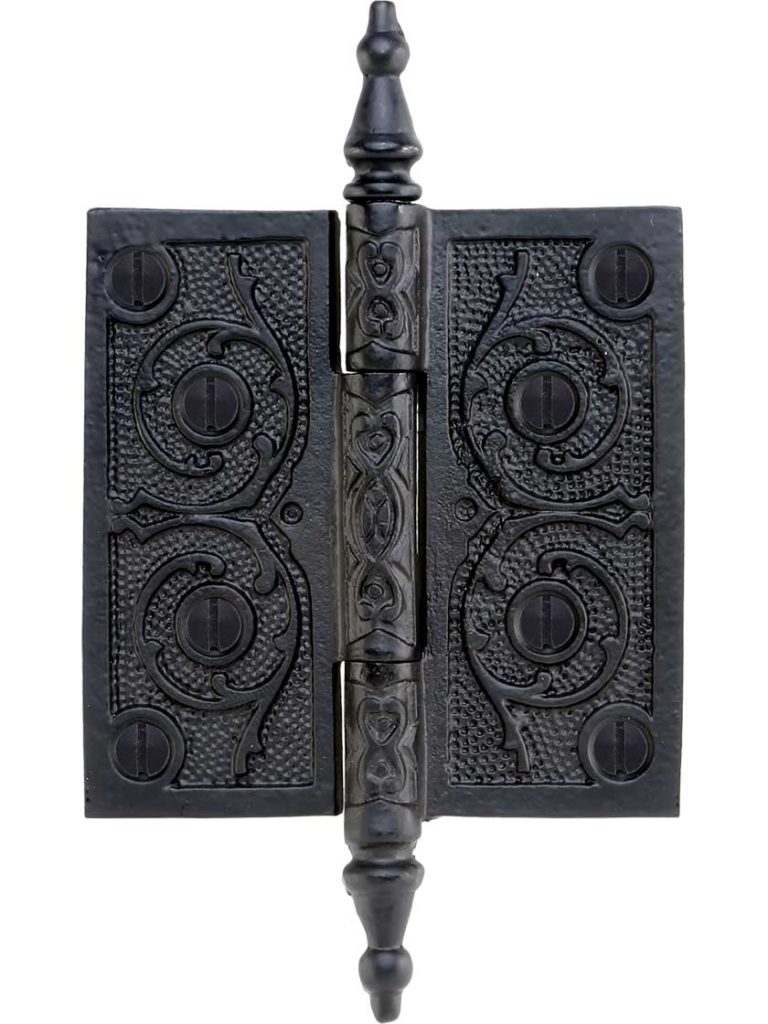
An ornate reproduction Victorian steeple-tip hinge from House of Antique Hardware
Because of their size and decorative features, architectural butt hinges offer some fun design possibilities when used in uncommon situations, such as doors on kitchen cabinets or furniture. Their over-sized proportions can work to your advantage, not only when you’re dealing with large or heavy doors, but also when you’re looking for a bit of creative fun. There’s something delightfully Alice in Wonderland-like about finding a set of kitchen cabinet doors hanging on architectural butts and fitted with architectural knobs; the over-sized hardware can make even the most dour adult feel like a child.
Over the years, a couple of clients have asked me to hang their cabinet doors on architectural butt hinges. The first had hired me based on my enthusiasm for incorporating salvaged parts in my work. He had a treasure trove of old house parts salvaged from a relative’s house. The general contractor on his kitchen remodel meticulously cleaned and installed the imposing Vitrolite tiles to create a backsplash. I designed what cabinets I could to incorporate leaded glass pulled out of original window sashes, as well as door knobs and hinges.
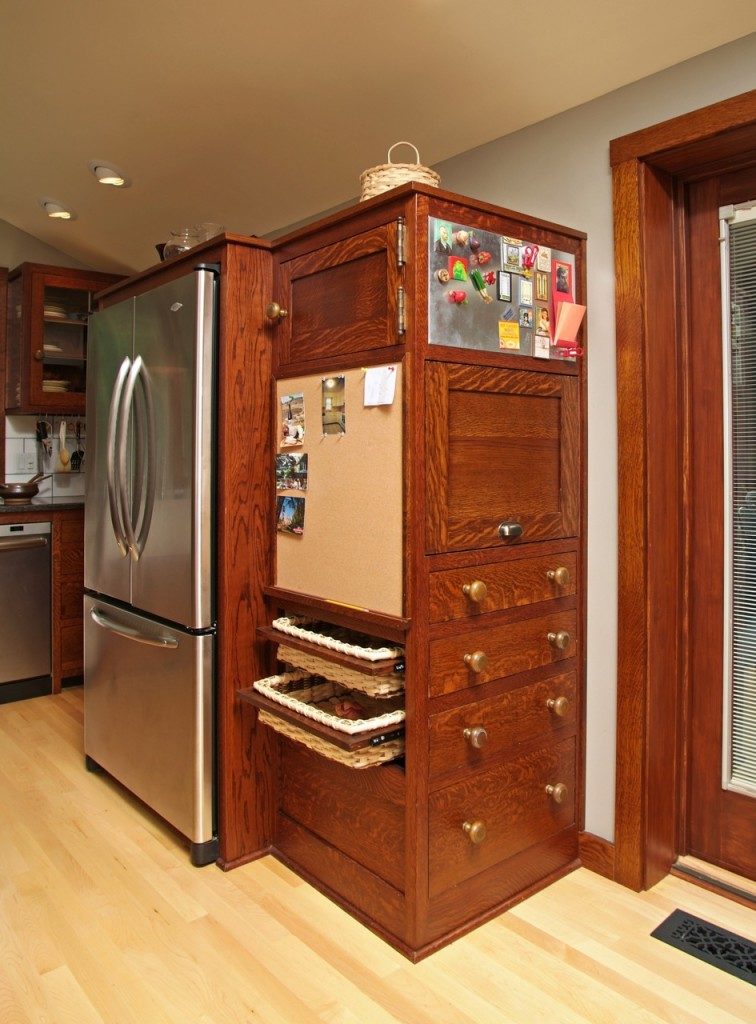
The oversized architectural butt hinges are most visible on smaller doors such as the one here, in the top section of a fun built-in at the right of the fridge. These have ball tips. Cabinetry by NR Hiller Design, Inc. Photo by Kendall Reeves, Spectrum Studio.
In other jobs, I have incorporated salvaged steeple-tip hinges.
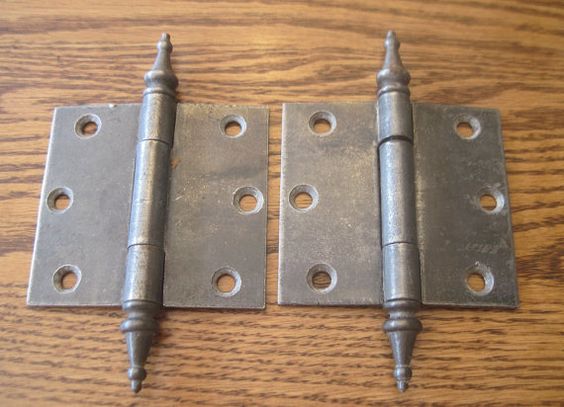
Steeple-tip hinges have pointed finials. Depending on the piece you work them into, they can evoke the dignity and uprightness of a church…or feel menacing, thanks to those points.
One was a glazed cabinet for storing dishes and glassware. We decided that because this cabinet was the only one in the kitchen to have clear glass doors, we’d use different hardware from that in the rest of the kitchen.
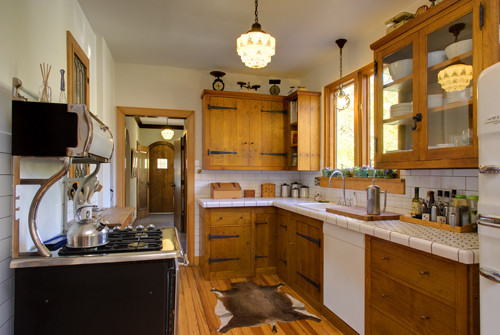
The glazed cabinet at upper right has doors hung on salvaged steeple-tip butts. Cabinetry by NR Hiller Design, Inc. Photo by Kendall Reeves, Spectrum Studio
If you’re going to use architectural butt hinges in a furniture-sized project, you need to take a few considerations into account. How far would you like the hinge barrel to protrude from the face of the piece? The answer will be partly a matter of aesthetics and partly of structure, because you need to make sure that the hinge’s screw holes will line up with your cabinet side or face frame so you can attach the door firmly.
Architectural butts will be featured along with four other specialty hinges in an article about 5 Less Common Hinges in the June issue of Popular Woodworking Magazine.
– Nancy Hiller
Here are some supplies and tools we find essential in our everyday work around the shop. We may receive a commission from sales referred by our links; however, we have carefully selected these products for their usefulness and quality.










First, Nancy your kitchens are gorge – I especially like the first, eclectic one, and the last, strap-hinged one.
Second, Did the Victorians know to clock their screws? Always vertically? I, for one, am a horizontal clocking man.